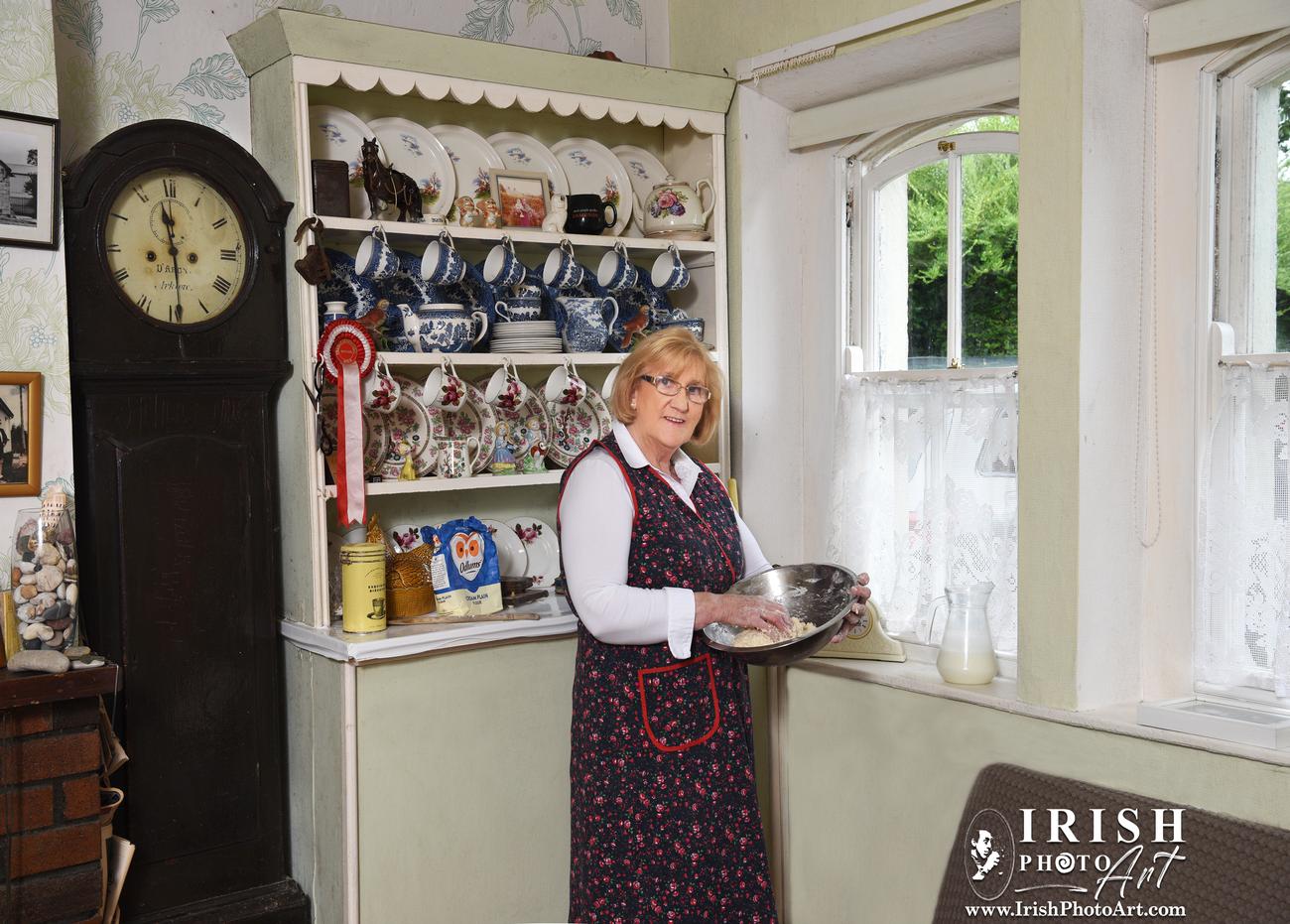Give us this day
our daily soda bread
There’s something magical about the smell of fresh bread, wafting through an Irish homestead. For generations, home baking has been at the heart of Irish life—a symbol of comfort, hospitality, tradition, and in a lot of cases, pure survival. Irish food culture in the late 1800s and up to Irish independence, was dictated by economic hardship, British occupation, and a great divide in social status across the country of Ireland. This period of course covers the Great Famine (1845-1852) and its devastating effects on the majority of the Irish people.
It is a well-established fact that this time, is a story of two separate economic groups of Irish citizens. The native Irish and the Anglo-Irish (Protestant landowners, usually of British descent) with two very different food cultures. The typical native Irish diet consisted of potatoes, oatmeal, home grown cabbage & root vegetables with some poultry, bacon, buttermilk, and along the west coast, seafood and seaweed. In contrast, the Anglo-Irish diet of the period had a much superior food culture that reflected their wealth, British influences, and access to high-quality ingredients. Unlike the Irish Catholic population, the Anglo-Irish elite enjoyed multi-course lavish dinners, fine meats, elaborate pastries, and imported wines, while their kitchens were run by servants producing both aristocratic and practical dishes. With a strong estate grown and produced food system, the wealthy enjoyed and safeguarded their position as landlords and upper-class citizens. For the most part, this position prevailed right through the Famine, at the same time, their poverty stricken tenants starved. While the effects of the Great Famine lasted for decades, and scattered Irish men and women all over the globe, those emigrants have succeeded and prospered, and with their help Ireland too survived and prospered into a vibrant, contemporary and free (for the most part) country – taking its place among the highest echelons of international communities around the world. But still maintaining its rich traditions and cultures, including its unique but simple wholesome food culture.
So, back to one of the Irish food stables, Irish soda bread. It’s as humble as it is iconic. Born out of necessity in around 1840s, soda bread came about when baking soda (or bread soda, as it’s often called in Ireland) became available. With no yeast, no waiting, and no fancy equipment needed, families could throw together a wholesome loaf using just flour, (oatmeal, barley, and later, soft wheat) was normally used, buttermilk, baking soda, and a pinch of salt. Baking was mostly done on open hearths fires of burning turf (peat), leading to a distinctive method of baking in a cast iron skillet pot. That famous cross cut into the top? Some say it was religious, to ward off evil spirits or let the fairies escape—but in reality, it helps the bread bake more evenly and makes quartering the loaf, simpler
Today, soda bread comes in many forms: wholemeal, white, seeded, or even with a touch of treacle for richness. Whether it’s smothered in butter or dipped in a hearty stew, it’s pure comfort food. Then there are the scones—soft, crumbly, and perfect with a cup of tea. Irish scones tend to be less sweet than their American cousins, often made with just flour, baking powder, butter, and milk. Add a handful of raisins or currants, and you’ve got a treat that’s simple but satisfying. Serve them warm with jam and a bit of cream, and you’ve basically created happiness on a plate.
And let’s not forget spotted dog—a cheerful name for a sweet soda bread packed with dried fruit, but always known in our house when I was growing up as 'Currney Bread'. Traditionally baked in rural homes, it’s a nostalgic favourite, especially among those who remember it from their granny’s kitchen. Sometimes sugar and egg are added for a richer, cakier texture, making it ideal for tea time or even breakfast with a bit of butter.
Irish home baking isn’t just about the food—it’s about memories, connection, and passing down the small joys of everyday life. It’s where generations come together, flour-dusted hands shaping traditions that never go out of style. While many Irish households today enjoy a mix of more global cuisines, the classics like brown or white soda bread, scones, and spotted dog still hold a special place in our hearts and on our tables.
Our baker is Kathleen, who was born, raised and still lives in the heart of the Wicklow hills. She and her sisters are all award winning home bakers, all learning the historic recipes from their mother, who learned the skills from her mother. The wall art photograph of Irish soda breads, in our Cottage food gallery, was created in the very kitchen of the untouched cottage, where Kathleen and her sisters, was born and raised.
Behind most of our photographic wall art, there is usually a story, which resonates in the mood and the emotion of the image. These are just some of the aspects that make an Irish Photo Art photograph, perfect for family living areas, as well as wall spaces in commercial restaurants – hotels and corporate public areas. Interior designers are always welcome to get in touch, for custom sizes and collections.

-sipa2439cfd-a-selection-of-home-baked-irish-soda-breads.jpg)

